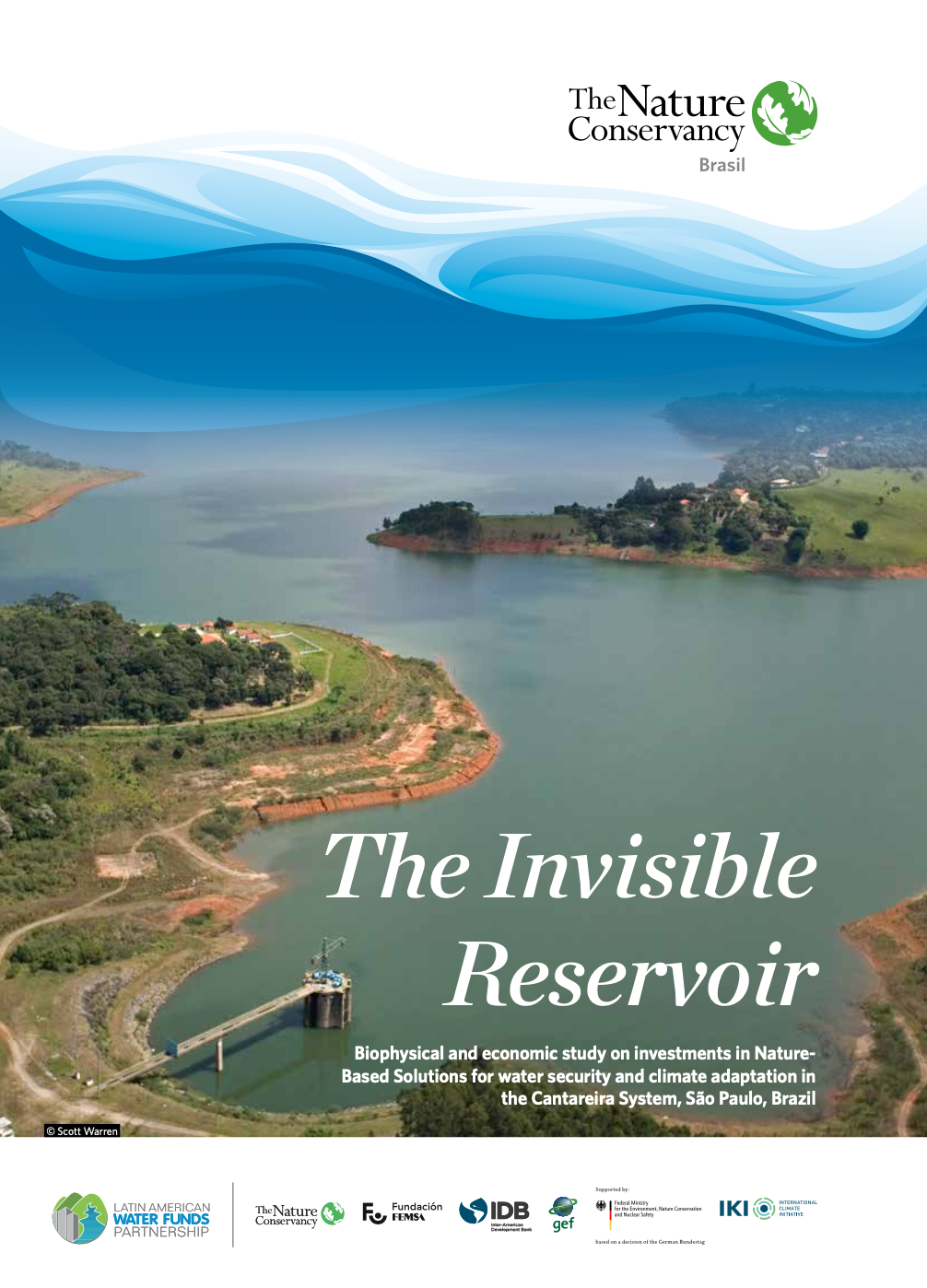New study about the importance of spring restoration to water security
"Invisible Reservoir" shows restoration’s economic and biological impact on water in São Paulo, Brazil.
The Invisible Reservoir
Acess the study that shows how nature based solutions helps to guarantee water.
DownloadWhether through drought or flooding, climate change is often most visibly expressed through water, and these impacts are only expected to increase in the years to come.The good news is that investing in nature offers a clear pathway to protecting and restoring the freshwater systems on which nature and people depend.
Among the contributions of TNC Brazil to the dialogue is the study published in the scientific journal Water - released during the World Water Day Conference on March 22 – titled “The Invisible Reservoir,” which analyzed the impact of nature-based solutions (NbS) such as restoration in the availability of water and climate adaptation. Three different scenarios were analyzed, and the results were similar and consistent in all of them.
According to the water Public Policies specialist for TNC Brazil and the study coordinator Claudio Klemz, they analyzed the biophysical characteristics of the Cantareira in the last 30 years. They concluded that the Cantareira System would have more water availability had the needed green-infrastructure interventions taking place.
In an ideal scenario with interventions in critical points of basins and springs that make up the System, the underground water’s invisible reservoir in the Cantareira would have 33% more water in 2018. During the worst drought in the last two decades, in 2014 and 2015, the increase could have reached 130%.
“Although the data cannot be projected for the future, it shows us the path to finding a solution to one of the greatest challenges of the century: the availability of quality water in quantities sufficient to meet the current and future needs of generations for diverse uses in a scenario of rapid natural-area conversion and climate change,” says Claudio.
The specialist explains that investing in green infrastructure, in nature-based solutions (NbS), is an essential alternative for water security and the mitigation of climate change effects.
Quote: Claudio Klemz
Our study also dealt with the economic cost of inaction, and results show that the 2014-2015 water crisis could have cost 30% less with the appropriate green interventions.
In addition to environmental benefits, those solutions also have a financial impact, as the intervention and restoration costs are smaller than those of inaction, as pointed out by the English economist Nicholas Stern, who used the results of formal economic models to show that the cost and general risks of climate change are equivalent to a loss of at least 5% of the global GDP each year. That could increase to 20% of the GDP or more if nothing is done to slow down climate change.
“Our study also dealt with the economic cost of inaction, and results show that the 2014-2015 water crisis could have cost 30% less with the appropriate green interventions. The cost corresponds to around US$84.5 million in total avoidable losses,” says Claudio.



